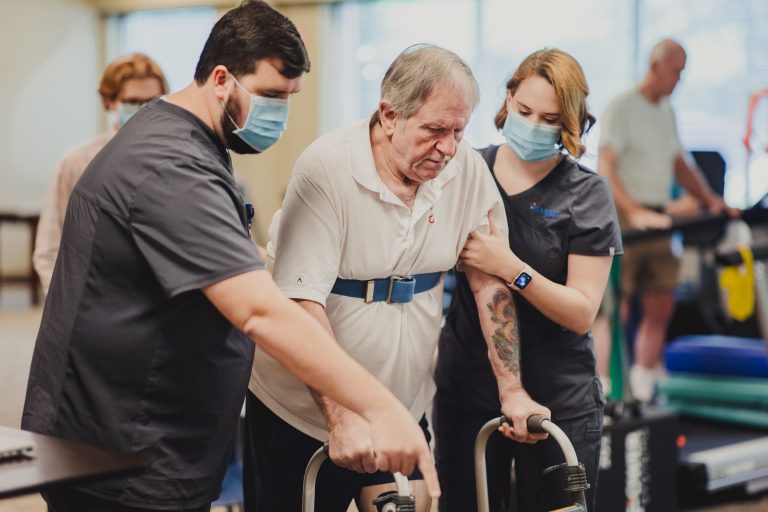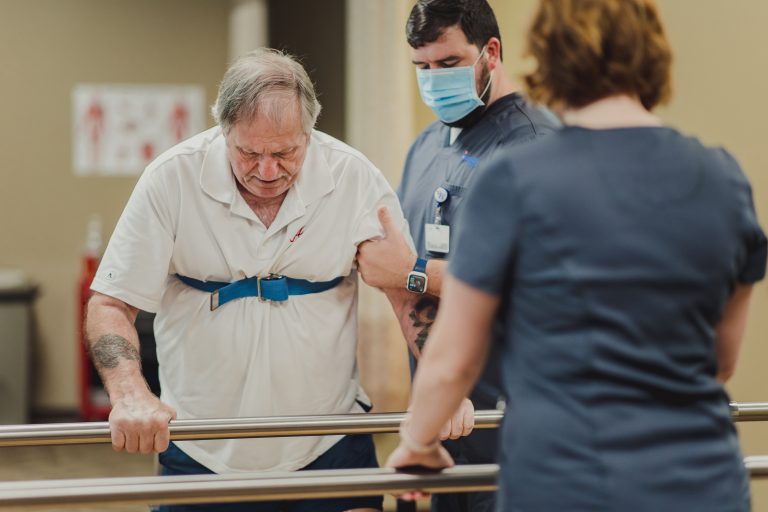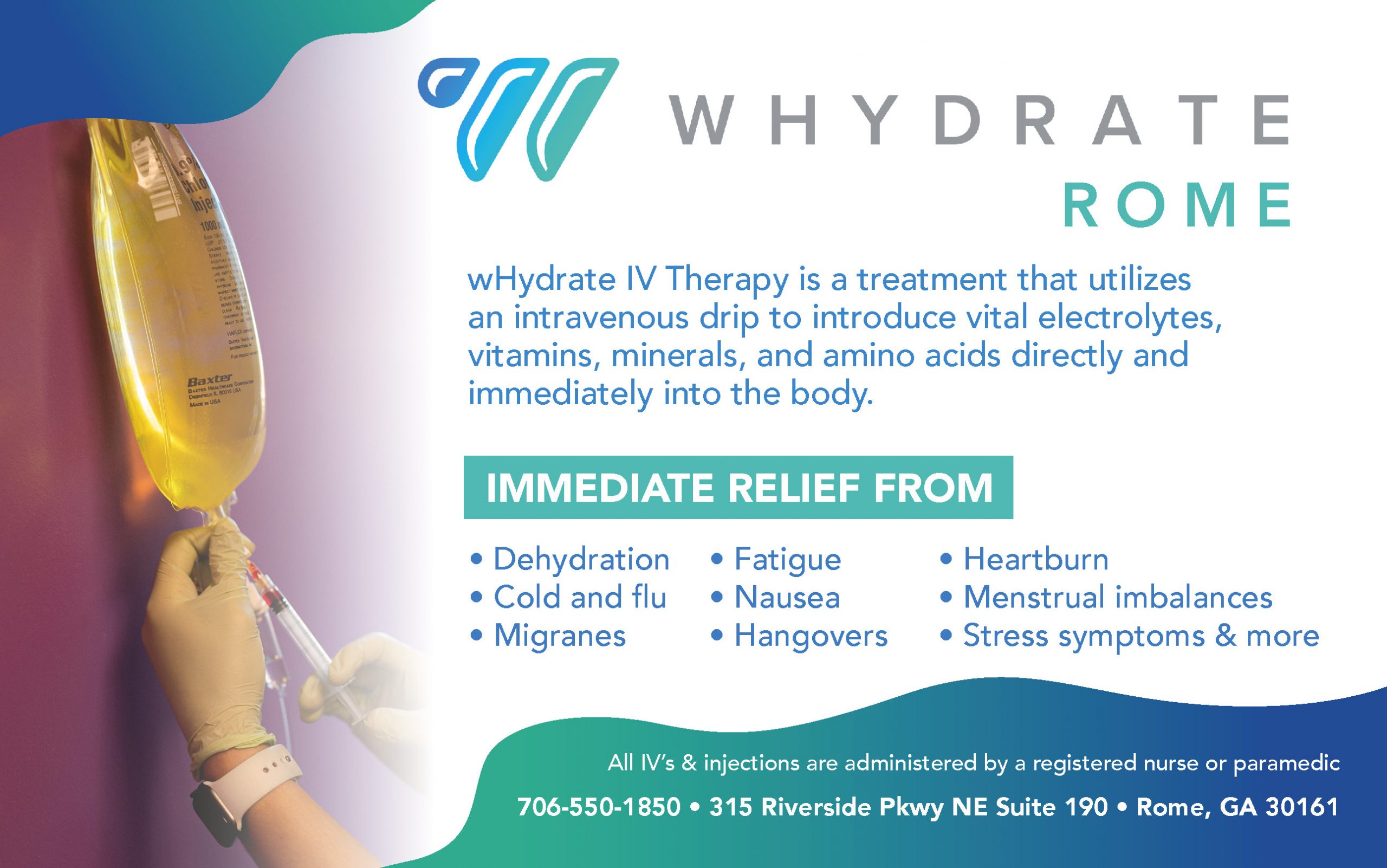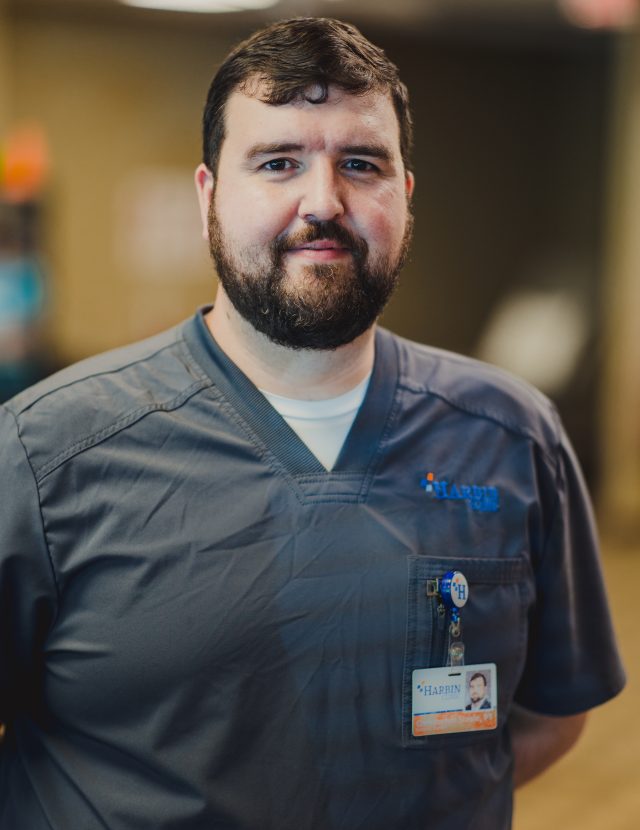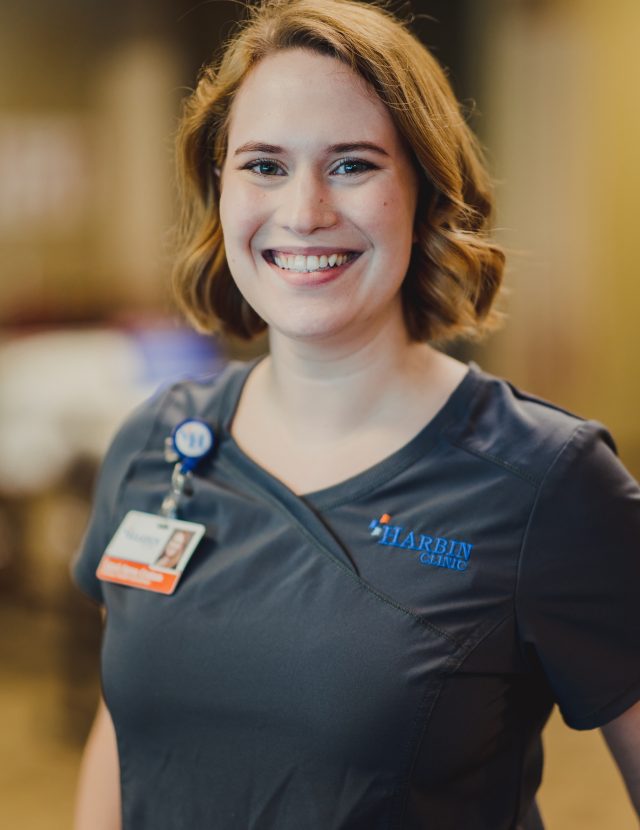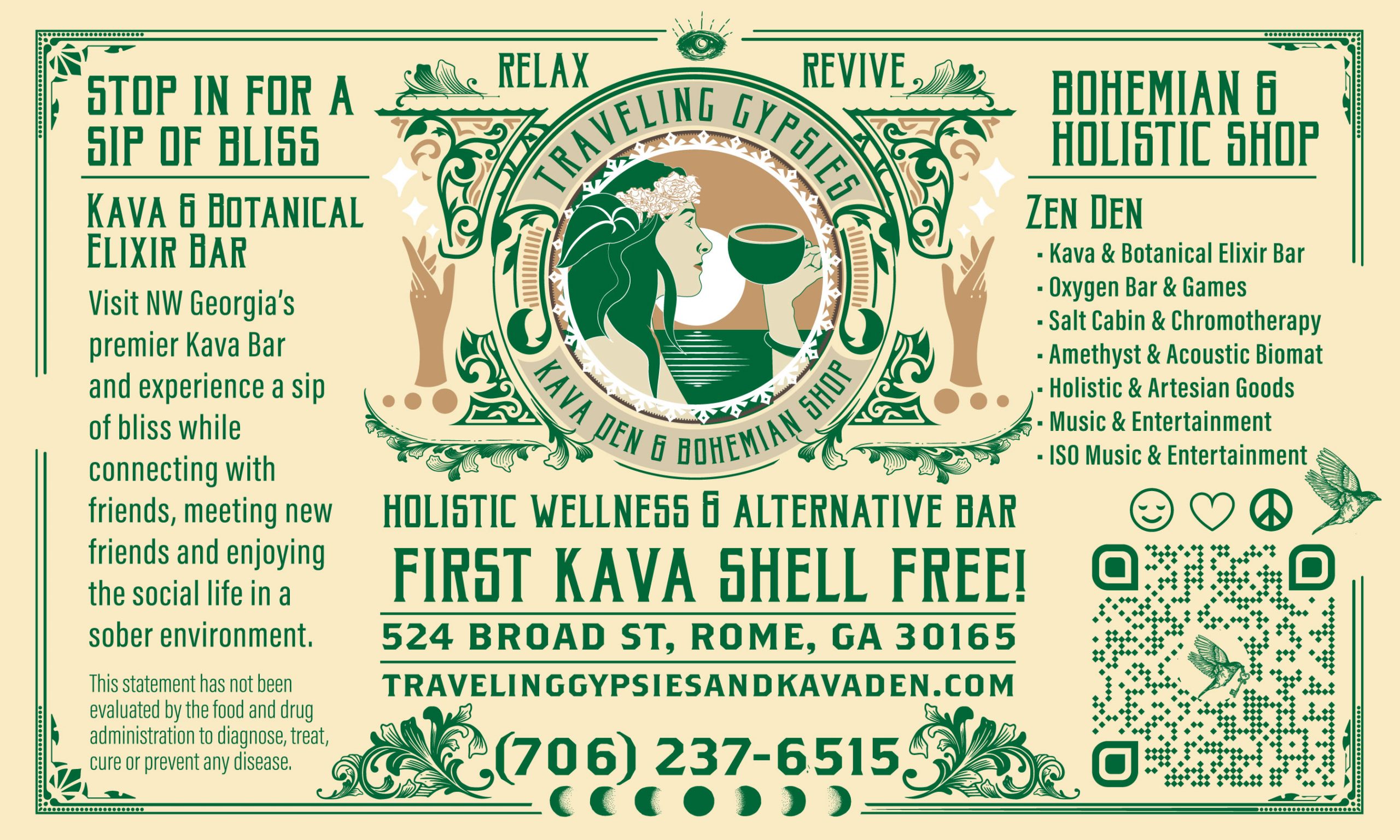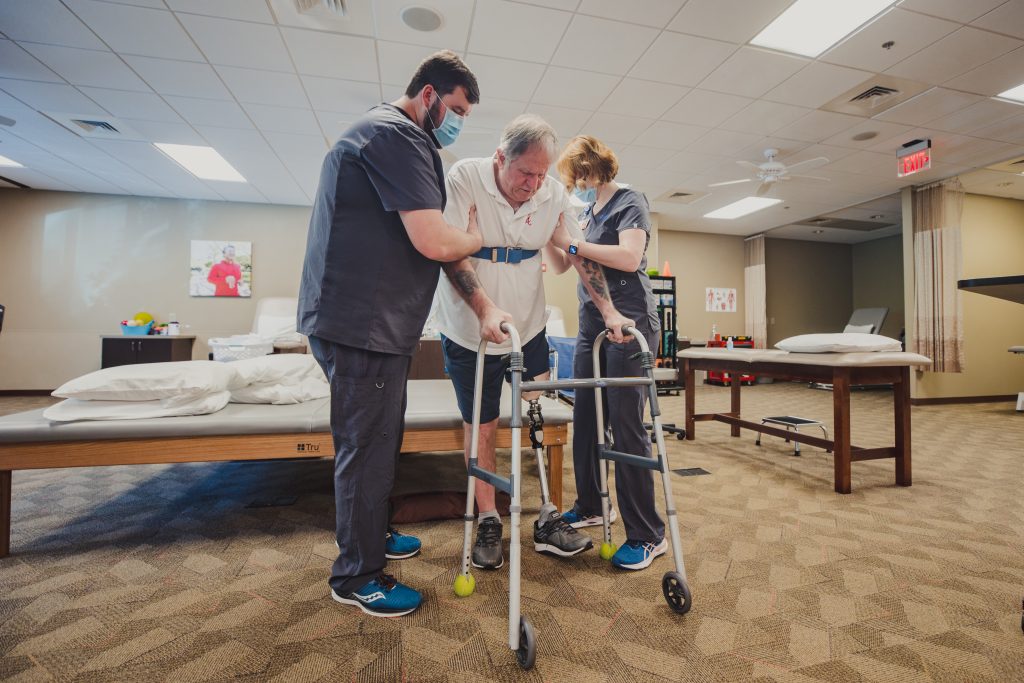
Photos Cameron Flasich
Physical therapists and their coworkers quite literally give people their lives back. Assisting patients in regaining strength and movement after such things as hip or knee replacement, rotator cuff repair, or back surgery, Harbin Clinic Physical Therapy Cartersville provides patients the guidance and care they need to improve their mobility and return to the activities they love. Physical therapist Dr. Chris Steele and physical therapist assistant Carol Anne Craton are two of the dedicated medical professionals who make this thriving clinic a vital part of the Cartersville healthcare community.
Setting their sights on service
As a long-time runner, Dr. Steele saw his share of other athletes injuring themselves and needing therapeutic care. He says, “I always wanted to do something in the medical profession. I liked sports and working with athletes. Originally, I thought I would like to work with professional athletes, but after I got into it, I found out I liked working with older patients better. The older patients can be a lot of fun—they tell some great stories.” Right now, the practice’s oldest patient is 95.
For Craton, her early interests in physical therapy hit close to home. She says, “I was in a car wreck when I was fourteen and had to go to physical therapy, so I saw it from the patient’s perspective. And loved it! Also, my mom had viral encephalitis [swelling of the brain] and had to go to physical therapy. I would drive her to her physical therapy appointments and watch her progress throughout her treatment. Eventually, she made a full recovery, but seeing that side of it was really impactful. From then on, I knew I wanted to do this as a career.”
Movement is the medicine
After joint surgery, initiating motion in the joint as soon as safely possible is paramount. This avoids atrophy and other complications. Dr. Steele explains, “For knee and hip surgery, the surgeons usually want them doing something that day at the hospital. Some people do a couple of weeks at home, but others are in here the next day.”
“We’re big believers in giving homework from the very first session,” Dr. Steele says. “Even coming in two or three times a week is not enough to get someone better, so we prescribe homework exercises from the very first session. And I say we ‘prescribe’ exercises because that’s the medicine we’re giving people. We help each patient find the right “dosage” exercise that’s right for them.”
Craton points out that this homework often includes the patient’s caregiver as well. She says, “We have caregiver training and instruction, so they know how to help at home without hurting the patient or themselves.”
All of that said, the professionals at Harbin Clinic Physical Therapy Cartersville are careful about allowing patients to progress at a safe pace. Dr. Steele says, “We have timelines from physicians based on surgical protocols. It’s individualized for each person. We move them along when it’s safe to advance them, pushing them carefully without overworking them.” He goes on to explain, for instance, that when patients have hip or knee replacement, they may either hesitate in pushing themselves or try to do too much too fast. “Some people try to get off a walker or a cane too soon after a surgery,” Dr. Steele says. “We want them off those things the right way, so they don’t wind up with a limp.” He adds, “After all, with the expense and trouble of surgery, you want your walking to be perfect when you’re done.”
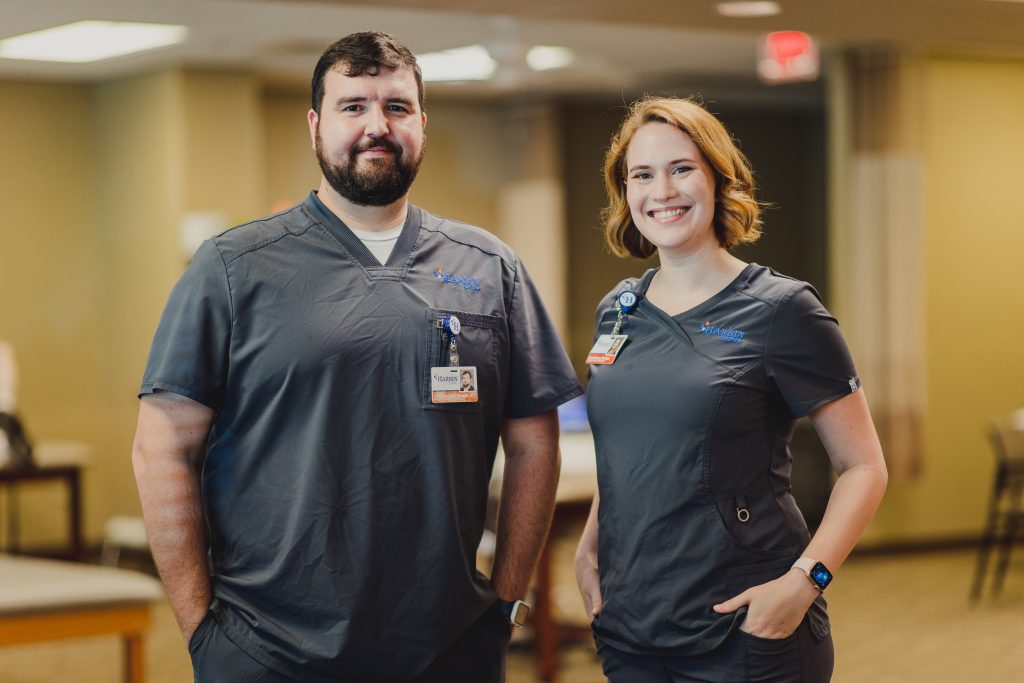
More than injury recovery
Another important service of the Cartersville clinic is helping those who suffer from Parkinson’s disease. Craton is certified in the care of these patients and enjoys working with people with neurological challenges and balance issues. “Right now, there’s no cure for Parkinson’s,” she says, “but we can decrease their fall risk, improve their independence and balance—help them do more of what they want to do.”
She adds, “We use what we call ‘functional component tasks’—these are personal for each patient. For instance, we may have someone who has problems getting in and out of the shower, so we focus on reproducing that movement. It’s very individualized.”
As with her decision to pursue the field of physical therapy, Craton’s interest in Parkinson’s disease had its origin in personal experience. “I had a great-grandmother who had Parkinson’s,” she says, “but she didn’t have this kind of rehabilitation. I wish she could have experienced this before she passed away.”
For the good times and the bad times
Both Craton and Dr. Steele emphasize that a big part of their job is to help patients endure difficult times and, conversely, to celebrate milestones and victories in their patient’s recovery. “We see people after a catastrophic injury, a tough diagnosis, or even an amputation,” Dr. Steele says, “so we’re there for those hard times. But we’re also there for the good times—like the other day we helped an amputee walk on his prosthesis for the first time.”
He also points out that they worked with this patient before his amputation, helping him prepare for the difficult process ahead. “He’s been upbeat through the whole thing—a real inspiration to our other patients. And to us, too.” For the staff at Harbin Clinic Physical Therapy Cartersville, that’s the kind of success story that makes all the hard work worth it.
For more information about Harbin Clinic Physical Therapy Cartersville go to harbinclinic.com/location/physical-therapy-cartersville/



